
"The more I explore," writes Jim, "the more I realize how much great art we've lost. As culture, as society, as humans..."
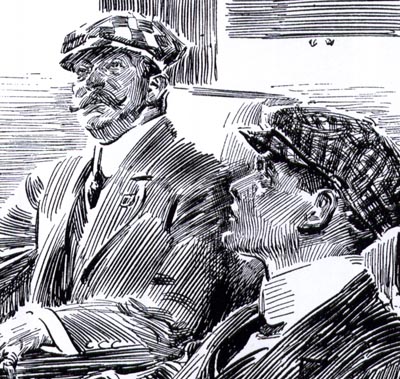
"... we've simply forgotten most of our artistic heritage."
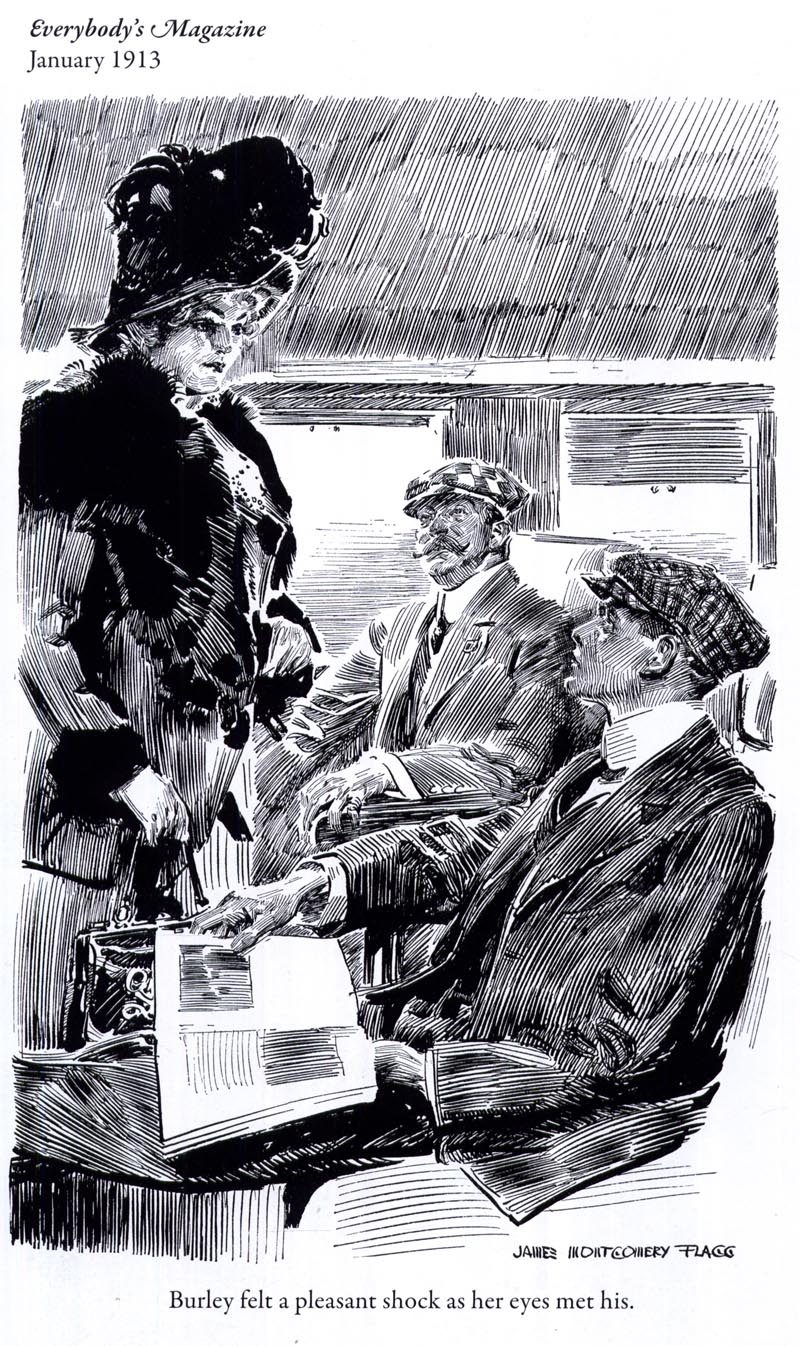
Jim has been a Today's Inspiration list members for quite some time now and he and I corresponded on the subject of the era he is so passionate about. In one note he explained to me, "I can trace MY fascination with the era to folks like Al Williamson and Roy Krenkel, Leif, who very much influenced Wrightson, Jones, Kaluta and Smith. As I was reading the fanzines of the late 1960s, I would learn that Krenkel was a big fan of Franklin Booth or the Williamson went gaga over Joseph Clement Coll. I can remember cutting classes at college in 1968 to pore over the shelves of early 20th century novels to see if they had any illustrations - and thus discovering the work of Coll (on Talbot Mundy) and Cornwell (on Peter B. Kyne) and being fascinated by the modernity of their work. Of course I was comparing it to comic and fantasy art, not commercial illustration - where it was anything BUT modern."

"I grew up in the 50s looking at Colliers and the SEP. I NEVER was drawn (no pun intended) into the art on the stories. I knew it was there, but it wasn't until I discovered comic books that illustration "called" to me. Then Frazetta paperback covers woke my latent appreciation and I began following the path backwards - quite literally skipping over the illustration of the 60s and 50s and most of the 40s as I went looking for the people who influenced my favorites. I wanted to know WHO Coll was and WHAT Williamson got from him. I wanted to understand why Wrightson wasn't drawing like Frazetta anymore but was channeling Franklin Booth. What prompted this "skipping" of a generation or two in artistic influence and WHY were these "antique" styles still relevant (and effective) in the 1970s?"
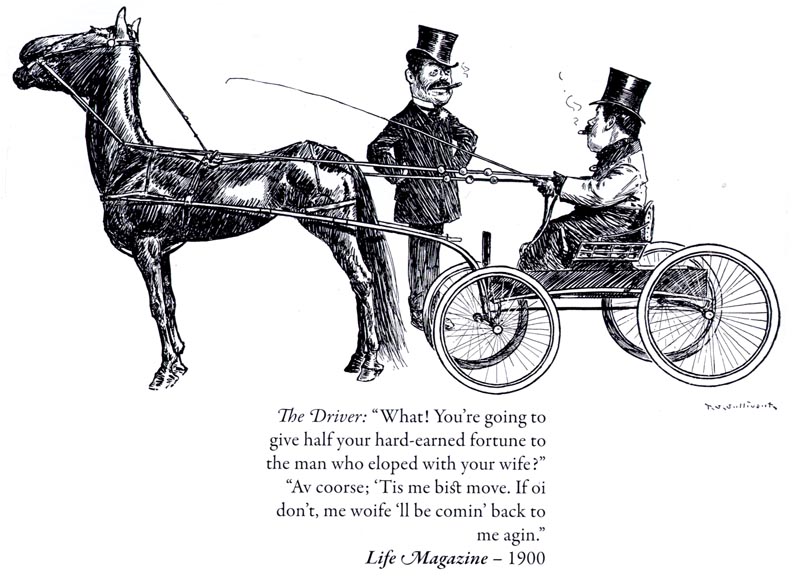
"It was only partially an intellectual quest. It was also that the echoes of those old styles were resonating with me AND with a generation of comic book artists and fans. When I found the source material, I understood. These guys were defining a genre (or three) and there was an exuberance there that never happened again. Sure, lots of GREAT illustration happened after the 1920s, but it was all derivative of (or in reaction to) the work of this seminal era."
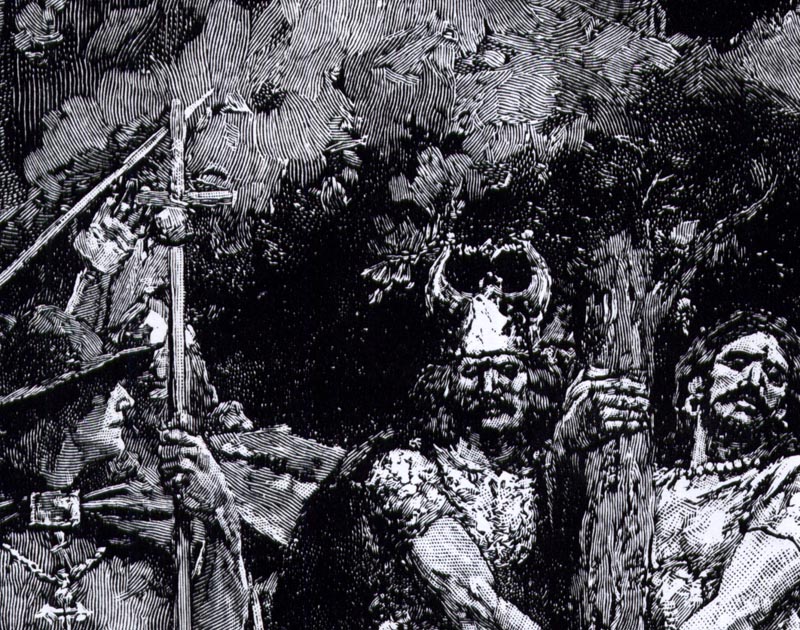
"The fine art/anti-photography movement was a major turning point and saved the craft of illustration from the dustbin, but it became, to this poor observer, something ELSE. Something good and often great, but it's always struck me as a somehow different sort of critter. The explosion of styles and craft that occurred from 1880 to 1920 was a one-time thing and was (and will be) never repeated."
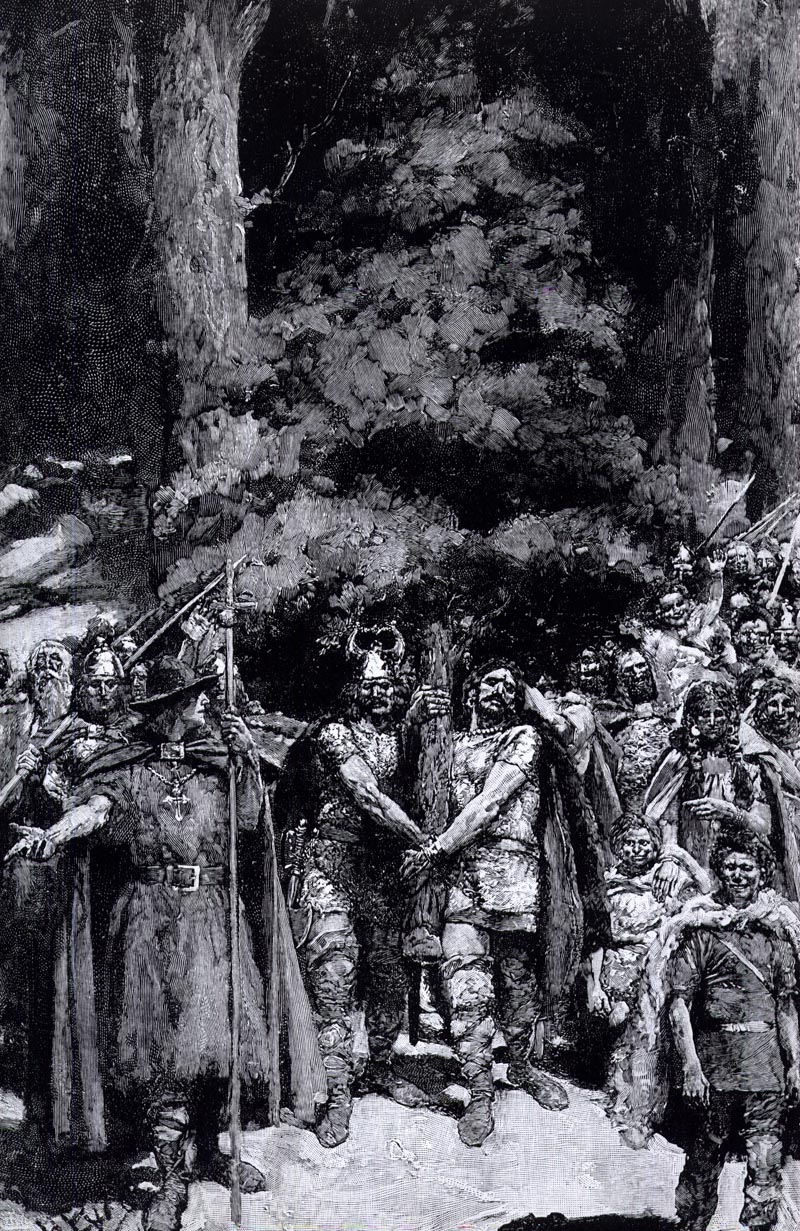
Since that note Jim's been kind enough to send me his latest issues of ImageS and so my education - and appreciation - grows. Its from the most recent Black & White ImageS that I scanned today's art samples. It truly is stunning work, and this is only a tiny sampling of what every issue of ImageS contains.
If you'd like to learn more about Jim's publications, go to The Vadeboncoeur Collection of ImageS
Any many thanks, Jim!
Great works. A very beautiful example of illustrations.
ReplyDeleteNice, nice work. Thanks for sharing.
ReplyDeleteCongratulations Leif, so glad you're finally coming around to the treasures of the very early great illustrators. I view it as a chain of influences as Jim Vadeboncoeur clearly points out, that are interrelated to almost every great and not so great serious illustrator down through the decades. I digress to my comment made yesterday, it can be analyzed as a visual reflection of our history and culture of the various periods in American, from the latter 1800s' to the present. The influence was passed to the next generation and the next, but where the chain broke was not in the appreciation of the great artists of the past, but education and training of the art student, which has been altered, changed, tampered with, minimized, manipulated and diluted over the decades. I think the vigorous embrace of modern art in our art schools, and now the frenzy of visual technology we have seen in the last couple of decades, has a lot to do with the changes in art education. It's not nearly as much about traditional elegance, sophistication and taste that we see in those early illustrations, it is about technique, eye catching visual effects and sledge hammer execution. I am not saying there are not some excellent talent doing highly skilled traditionally oriented drawing and painting. And, I think that is evidence the flame of the great painters and illustrators will never completely burn out.. I hope. Studying and analyzing the early illustrators can and should be a major part of the education of today's illustrators as well as fine artists. And, IMO if the art training today went back to more of the old school era of a disciplined spartan education, it wouldn't be a bad thing.
ReplyDeleteTom Watson
Thanks S. Quimas and Vintage Kids' Books for your comments. :^)
ReplyDeleteTom; Thanks for sharing your insight on this topic yesterday and today. Very thought provoking. You an I have corresponded privately on the subject for the benefit of the public discussion I'll just reiterate that as much as I appreciate the art of this era I find myself unable to relate to it on an emotional level. Its too... "period" for me. I don't feel a connection to the subjects. So as much as I'm in awe of the craftsmanship (and I genuinely am) I feel like an outside observer of some quaint historical document.
ReplyDeleteWhen I look at the illustration of the '40s, '50s and '60s I find an immediate emotional connection there. I genuinely excited at the imagery - often its pop artiness or kitchiness is exactly what I find so magnetic! The experimentation going on in the early efforts of the stylized artists, the toes being dipped into the waters of abstract expressionism, the atomic age references and bright comic book colour schemes are all comfortably familiar markers along the road I've travelled since my earliest childhood memories.
But yes, this is pretty amazing stuff and I am enjoying the process of learning what inspired the artists that inspire me. :^)
Tom;
ReplyDeleteRegarding the change in art education: I don't disagree that its a factorin the changes that have brought us to where we are today... but the education of young graphic artists doesn't happen in a bubble -- its also predicated by a change of attitude in the marketplace. That is; didn't art directors want something new as much as illustrators wanted to remain relevant? And as I'm now on the front line of teaching the next generation of graphic artists, I see the pressures the business puts on the current crop to be multi-disciplinarians. The industry demands so many computer skills of these students that to devote the time we'd like to give them to really learn drawing and painting would add years to their enrollment! Realistically, who could afford it -- and where are the jobs for those people?
Its a complex problem and it took a long time for us to arrive at where we are. Sadly, I have to conclude that, in this modern world, to go back to the disciplined, spartan education of someone like Robert Fawcett, for instance, would mean turning out classes of thoroughly unemployable commercial artists.
Yes, I agree that sadly the art schools and the illustration students today are faced with a much different market, and I suspect a much more limited market in respect to available work for the traditional illustrator. Leif, after 1996, when teaching part time at the Academy of Art, we were faced with the same dilemma you point out about spreading out the curriculum in order to shoehorn in a multitude of necessary disciplines in four years. In my second semester of teaching, a senior art director from BBD&O came in to my class one day, and observed for about 30 minutes. He told me during a break that the school was finding that their graduating students were not prepared and therefore not hirable as beginning art directors for ad agencies. So, the school decided to invite a number of top ad agency ADs to sit in the classes and observe. With their input, it was apparent that there was a lack of drawing skills in communicating conceptual ideas. Myself and other teachers had tried to approach the subject at faculty meetings before, but it wasn't until it threatened the schools reputation, that they did something about it. They asked myself and some other teachers with illustration backgrounds, if we would teach drawing skills in the newly formed Foundations Dept. Every single student, even the photography students had to take one semester of basic drawing skills. With all its capabilities, the computer could not replace the importance of communicating preliminary visual concepts for ads, etc., through hand drawn sketches and marker comps as had been done in the past. About half the students did not want to take the class and objected strongly. They either didn't think it was necessary, because they thought they could do it all on the computer, or they just didn't like to draw and didn't want to bother learning it. About 35% of all my students were from foreign countries, primarily the Orient. They were much more disciplined, and willing to learn whatever they were told they needed, which made my job more satisfying.
ReplyDeleteTom Watson
What beautiful illustrations! Mr. Peng, I hope you don't mind me saving some of these scans for my middle school art classes. The linework and hatching techniques in them will be great examples for our printmaking unit!
ReplyDeleteMike
Great discussion, guys. Leif and Tom are both right. The bottom line, though, is always the market place. Even back in high school....when I knew I wanted to be an artist....I had to decide where and IF there was a market. It had to be a viable source of work and of income. Luckily, print illustration was very much alive and well. It would be a steep climb....but worth going for. Now that print market is mostly gone. The world has changed drastically, and will continue to change in the future. Young artists today have to think differently. Sure, training had a lot to do with it....but a revolution in visual communication was the over-riding factor. Thanks again for the discussion and the TI examples. Leif, I think in time you will come to appreciate and, yes, even love the early illustrators! Many were very creative and very talented cats.
ReplyDeleteThe marketplace was ALWAYS the defining factor in Art School education.It's no coincidence that it's always the older generation bemoaning the decline in standards of art education simply because the agenda has moved on and they feel the work of their day was superior.This is mainly nostalgia and a lack of understanding of what present day students really need to make a living.
ReplyDeleteJim Vadeboncoeur does great work; I spent a lovely afternoon browsing his legendary book shelves and talking comics, years ago. Thanks for bringing us up to date on his activities, Leif.
ReplyDeleteRemo.. as an illustration student in the late 50s', most of us loved and admired those early illustrations, and I would have been happy to have been an illustrator at the turn of the century.. I wasn't a nostalgic old guy back then, with a lack of understanding as to what was needed to make a living. Those early skills just connected with me. So, enlighten me Remo.. what do present day art students need to make a living? I've been out of the illustration market for the last ten years, and I'm eager to learn what the "progressive" approach today is in the market. As an active consumer, I suspect that today and in the near future, advertising illustration will want to influence me and my generation as well as the young to middle age consumer. So how are art schools now preparing students to do that?
ReplyDeleteTom Watson
A member of my family is studying in this area at the moment,Tom and I can tell you professional level skills on Illustrator,Photoshop and InDesign are needed knowledge of web design software and other stuff like Corel painter are also useful.As they also study manufacturing processes as well as projects and theoretical work where exactly are they going to fit extended sessions in life class? I'm also pretty sure that those who experienced the rigorous old school training would have looked on your generation as only partially skilled in the classic disciplines.As I said, it's a continuum.
ReplyDeleteI'm always reminded of the armchair generals when I hear this sort of criticism.
Jim's books are great. I have the whole set and enjoy them often. Cannot wait for #6!
ReplyDeleteRemo, does it take four years to learn those programs, I don't know. I taught myself Photoshop, Illustrator and Pagemaker all at the same time, back in the late 90s'. It took me about six months, but I was willing to put the extra time into it. Ironically, it was the traditional non computer illustration work that continued to be the large share of my work, in spite of just about everyone telling me I couldn't survive in the business without learning those programs. Maybe we are talking about how hard a student is willing to work to learn ALL the skills, while in school.. at least not just touch on traditional skills, or think they aren't necessary. I don't know Remo, maybe I'm just one of those armchair generals that thinks troops on the ground are just as important as high tech precision bombing from a war room.
ReplyDeleteTom Watson
I think the ability to make your design work on paper before realizing it on the computer is a useful skill but the kind of end product,( overprints,textures, typography,etc } required today is so different from what was conceivable in your day that the kind of training you are talking about just isn't needed by most art students.That may be anathema to you but its just a fact.Art must move on, and as much as I love traditional illustration I really don't need to see some version of it played out again.I want to see new things, not re-hashes of the past.
ReplyDeleteTom; I can't speak for all art colleges but my students do get as much classical training in illustration as I can possibly sneak into their assignments. For the most part, this is nothing more sophisticated than learning to construct figures and objects by drawing them as basic shapes and applying perspective. Our students course load is about half digital and half real media. I even make them hand-render and study type faces and comp in greeked body copy on their layouts.
ReplyDeleteBut just as some would argue, why bother teaching basic math when everything around you from your phone to your laptop has a calculator in it, many would argue why do you need to learn perspective or how to draw the figure when we now have Poser http://poser.smithmicro.com/poser.html and Google SketchUp http://sketchup.google.com/
Its very hard to justify the hours spent on classical training to those people - esp. when they are paying a fortune to get the skills that will get them work in today's industry.
Remo is right - you can MORE than get by as a graphic arts professional these days without ever drawing so much as a thumbnail sketch. You cannot without knowing a vast array of software programs. You'd be completely unemployable (of course there could always be the exception, but that doesn't change the fact for the majority of young hopefuls)
ReplyDeleteIllustration for print (magazines) is so close to death's door that only those of us who love it passionately are insisting we keep administering CPR. Everyone else has already signed the death certificate. No one buys magazines any more and there's so much stock illustration available that its beyond ridiculous. The fees paid haven't gone up in 25 years.
Today, the only remaining market for something akin to classical illustration is the comic book industry - and frankly that market is so marginalized that it would have long ago ceased to exist if Hollywood hadn't discovered its a bottomless gold mine for blockbuster movie concepts. I honestly believe that's the only reason huge entertainment corporations continue to support the labour intensive process of making comic book art. The sales of the actual comic books are abysmal.
I look at today's animated movies,comics, storyboards etc and ask myself do these look qualitively worse than what was being produced in the 40s 50s and 60s, and I can honestly say that for the most part its all as good, if not better, today than back then.
ReplyDeleteI can't compare magazine illustration -particularly realistic- because ,as Leif said, that's virtually gone.
But look at the welter of super slick pre-production renderings of space vehicles characters and environments you see at ConceptArt and tell me those talented artists couldn't have been the Binghams Andersons and Loomises of today.
Good point - I should have qualified: the only remaining market for finished illustration is comics -- there is a TON of work in concept art for 'realistic' illustration. Its just not intended for public consumption.
ReplyDeleteThe artists who work in the concept art industry are very serious students of the classical illustrators. reading some of the forums, neophytes asking for drawing advice are invariably directed to find Loomis, Bridgman, etc - and to draw and paint and sketch constantly - and from life.
As it was 25 years ago when I was graduating from art college, only a tiny percentage of students will have the passion and determination (and hopefully, some talent and luck) to pursue a career in illustration. It seems to me, in spite of technological advances and stylistic changes, the percentage hasn't changed that much over the years. Of the 200 students in my first year illustration class, I can think of less than 10 who made it to a successful career in illustration.
Leif and Remo, thanks for the interesting input on today's illustration and art school status. My observations of the illustration market today is reflective of your comments. However, illustration has long been one of the only fields where you can earn a degree and your prospects of earning a living from it, are not that great.. as Leif suggested.
ReplyDeleteWhen I attended Art Center School in L.A., One of my teachers told me that over half those that enrolled in ACS would drop out before getting their degree, and less than half of those that graduated would find sustainable illustration work. A friend earned her degree at the Academy of Art in illustration, and couldn't find a job as an illustrator. She complained to the school, and they offered her a teaching job for a basic drawing class. Her husband, also an AA illustration graduate, couldn't find a job either, so he enrolled in a culinary school and became a souse chef for a hotel chain restaurant. My friend did find a modest amount of freelance illustration work, but not enough to pay the bills. And, that was in the latter 1990s'. I'm sure glad I was in the business when it was still relatively healthy.
I suspect, due to the demise of the illustration market, the fine art market has benefitted considerably. I think there is very little separation between traditional illustration and traditional fine arts today.. particularly in the print market.
Tom Watson
I think you're absolutely right, Tom; I think many artists have discovered that they can create their own miniature network of dedicated followers/customers thanks to the Internet and all the social media tools one has at one's disposal. Some have created incredibly lucrative businesses - others are making part of their income through things like Etsy, Lulu, Threadless, etc. to supplement their commercial art income. Some are participating in gallery shows and selling original art. The line between fine and commercial art is nearly indistinguishable for many of these artists.
ReplyDeleteAs always, artists won't (can't) stop making art, whether commercial clients want that art or not. Its like eating and breathing to them (us). :^)
Michele Falanga, Frank Frazetta's childhood art teacher
ReplyDeleteRead the posts at Tenth Letter of the Alphabet, alphabettenthletter.blogspot.com
2012
Feb 1: Profile of Falanga includes a photograph of him and reproductions of his art
Feb 2: News clippings about Falanga and the Brooklyn Academy of Fine Arts
Feb 3: Students of the Brooklyn Academy of Fine Arts
Feb 4: A look at 85 Court Street, home of the Brooklyn Academy of Fine Arts
Feb 6: Hal Foster's influence on Frazetta's Thun'da
Feb 9: Mini-profile of Paul Grubman, Frazetta's high school art teacher
Such a nice blog post on this topic. Our dissertation paper writing services online aim to provide a helping hand to every student, who is facing problems drafting a dissertation paper, regardless of the complexity of the given topic. So, whether you are dealing with an intricate topic like statistics and probability, or a much simpler topic, you can expect valuable dissertation help from MyAssignmenthelp.co.uk experts.
ReplyDeleteThis article is damn good. And the information is well informative. Thanks for sharing this. We feel proud to offer the best online assignment help services to the students. We are dedicated to provide top Medical Science Assignment Help at very cheap prices. Mostly students nowadays demand project management assignment help from experts.
ReplyDeletevarious significant stretches of demonstrating foundation and complete figuring out how to make top-quality assignments Assignment Essay Help
ReplyDeleteIt’s my pleasure to visit this website for browsing interesting stuff and facts. Thanks for writing this piece of content for us.
ReplyDeleteeconomics tutor in Australia
online math tutor
Wow, I really like the first image – I think I should get myself a hanging similar to this one. Though I provide Cheap Coursework Help, I still make enough money that I can afford my hobby of art collection. Anyway, I am going to look for a similar painting, and if I find it, I will buy it.
ReplyDeleteHey everyone now don't worry about your assignment, dissertation, essays, coursework or many more like these all because we are giving the best essay writing service in UK from the native of UK
ReplyDelete